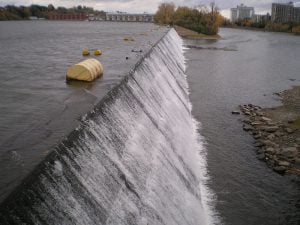
Environment
The truth about carbon capture
Carbon capture is big business, but its challenges fly in the face of the need to lower emissions. Can we square the circle on this technological Wild West?
- 5042 words
- 21 minutes
This article is over 5 years old and may contain outdated information.
Science & Tech

When climate experts identify the sources of carbon released into the atmosphere, a handful of key culprits come up again and again: oil sands producers and coal-fired generating plants, of course, but also buildings (11 per cent of total emissions, due to heating and cooling systems, lighting, etc.) and transportation (24 per cent, because of fuel). Transportation and residential energy use, in fact, account for almost half of all Canadian consumption.
As homeowners invest in more energy-efficient appliances or electric heating systems, and as consumer and fleet-operator demand for electric vehicles gathers momentum, the energy demand mix could begin to change, with electricity’s overall share growing. Yet this shift becomes meaningful from a climate change perspective only if the additional power required to operate those electric water tanks or hybrid vehicles comes from clean sources, such as hydro, wind or solar. After all, electric vehicles charged with power generated by coal don’t help the atmosphere; they merely shift the source of the emissions.
While hype has hung heavily over the potential market for electric cars for years, there’s now growing evidence of consumer interest thanks to the marketing of relatively affordable models, the growing deployment of charging stations and improved range and power from batteries. According to auto journalist Matthew Klippenstein, there are now 1,060 commercial charging stations across Canada, with 18,222 vehicles sold since 2010 (the market in the U.S. is much more developed, with more than 300,000 electric vehicles sold).
According to a detailed 2015 study on Canada’s plug-in electric vehicle market by Simon Fraser University scholars Jonn Axsen, a sustainable transportation expert, and Suzanne Goldberg, a climate change economist, such vehicles could account for four to 20 per cent of the vehicle market by 2030, depending on various factors, such as charger availability, the diversity of models and price points, and provincial emissions rules.
In provinces such as B.C., Ontario and Quebec, where the electricity supply doesn’t generate a lot of carbon, the benefits could be significant, depending on how the market develops (low gas prices aren’t helping) and consumer awareness of charging station locations, etc.
While such changes point to a potentially virtuous circle for electrical technology and renewable energy sources, the hydro power sector in some regions faces the opposite dynamic, with climate change triggering environmental conditions that undermine previously stable renewables, such as hydro.
For example, years of drought and over-consumption of water in the U.S. southwest have turned Lake Mead, the rugged Nevada lake behind the Hoover Dam, into something of an environmental disaster. The lake, which is a reservoir on the meandering Colorado River, is now ringed by a conspicuous white strip of exposed rock — the water line from an earlier era. But as a result of reduced levels due to both overuse of water and a sustained drought thought to be linked to rising temperatures, the generating station at the Hoover Dam has seen its capacity decline from 2,080 megawatts to 1,500 megawatts in July 2015, with predictions for 2016 as low as 1,120 megawatts.
Scientists who have studied the overall impact of climate change on hydro power have also concluded that the impact varies sharply, with northern areas actually seeing more precipitation and melt related to warming in the polar regions. Overall, according to a 2012 Norwegian study, the global amount of hydro power output won’t really change as increased precipitation and melting in the north offsets the impact of drought and reduced run-off in the south.
Elevated run-off, however, potentially brings another set of problems, with aging smaller hydro facilities exposed to damage caused by torrential spring rains and flooding, as happened in Ontario’s lake country a few years ago. “Too much water is not good for us,” says Jacob Irving, CEO of the Canadian Hydropower Association. “We have to main our balance.”
Are you passionate about Canadian geography?
You can support Canadian Geographic in 3 ways:

This story is from the June 2016 Issue

Environment
Carbon capture is big business, but its challenges fly in the face of the need to lower emissions. Can we square the circle on this technological Wild West?

Environment
As the impacts of global warming become increasingly evident, the connections to biodiversity loss are hard to ignore. Can this fall’s two key international climate conferences point us to a nature-positive future?

Science & Tech
Four experts discuss Hydro-Quebec and the driving force behind its gigantic network of generating stations

Science & Tech
Canada has about 160,000 megawatts of untapped hydro power. How can we access it?